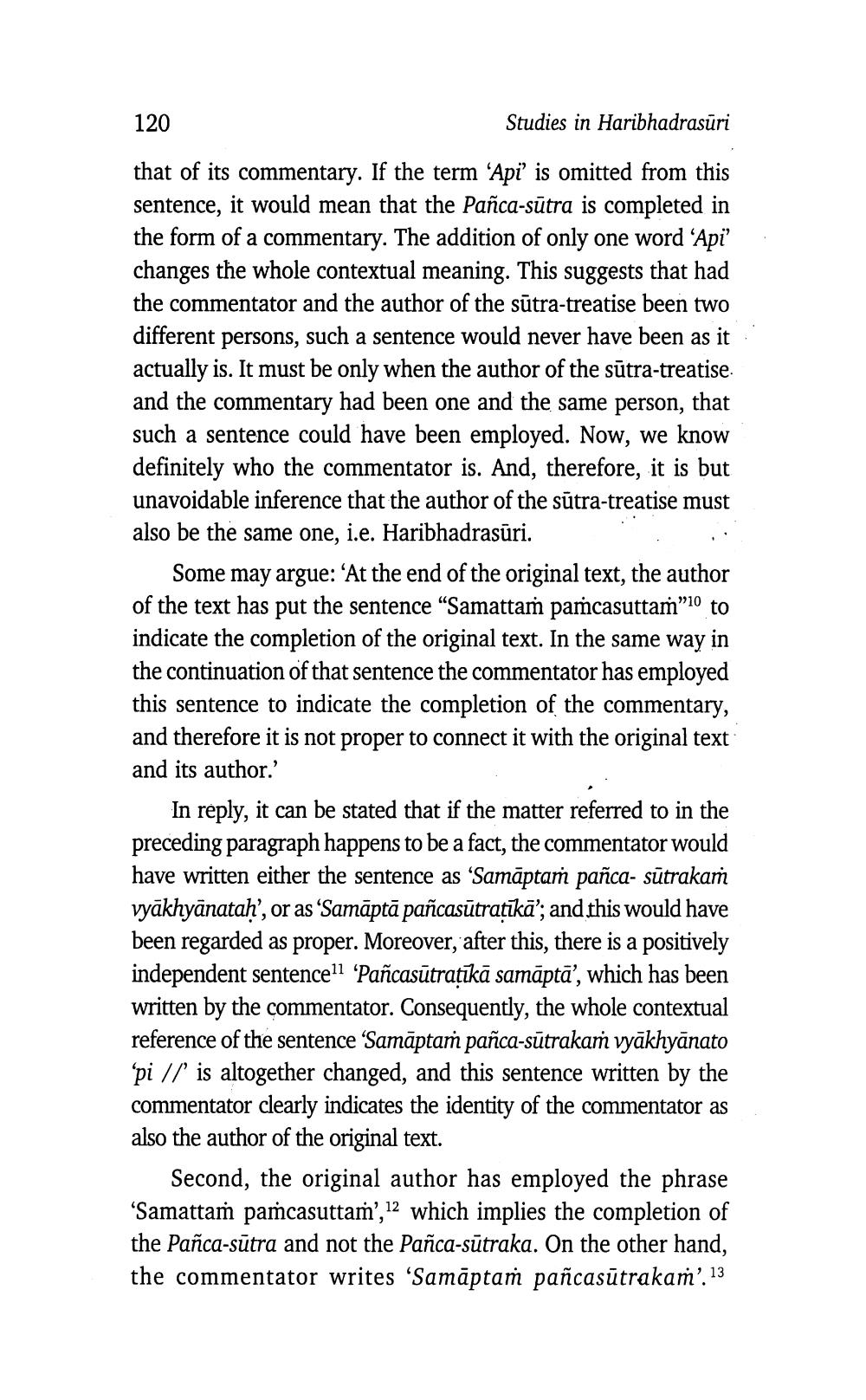________________
120
Studies in Haribhadrasuri
that of its commentary. If the term 'Api' is omitted from this sentence, it would mean that the Pañca-sūtra is completed in the form of a commentary. The addition of only one word 'Api’ changes the whole contextual meaning. This suggests that had the commentator and the author of the sūtra-treatise been two different persons, such a sentence would never have been as it actually is. It must be only when the author of the sūtra-treatise and the commentary had been one and the same person, that such a sentence could have been employed. Now, we know definitely who the commentator is. And, therefore, it is but unavoidable inference that the author of the sūtra-treatise must also be the same one, i.e. Haribhadrasūri.
Some may argue: 'At the end of the original text, the author of the text has put the sentence “Samattam pamcasuttam”10 to indicate the completion of the original text. In the same way in the continuation of that sentence the commentator has employed this sentence to indicate the completion of the commentary, and therefore it is not proper to connect it with the original text and its author.
In reply, it can be stated that if the matter referred to in the preceding paragraph happens to be a fact, the commentator would have written either the sentence as 'Samāptam pañca- sūtrakam vyākhyānataħ', or as “Samāptā pañcasūtratīkā'; and this would have been regarded as proper. Moreover, after this, there is a positively independent sentenceli 'Pañcasūtratīkā samāptā', which has been written by the commentator. Consequently, the whole contextual reference of the sentence 'Samāptam pañca-sūtrakam vyākhyānato 'pi //' is altogether changed, and this sentence written by the commentator clearly indicates the identity of the commentator as also the author of the original text.
Second, the original author has employed the phrase 'Samattam pamcasuttam', 12 which implies the completion of the Pañca-sūtra and not the Pañca-sūtraka. On the other hand, the commentator writes 'Samāptam pañcasūtrakam'.13




